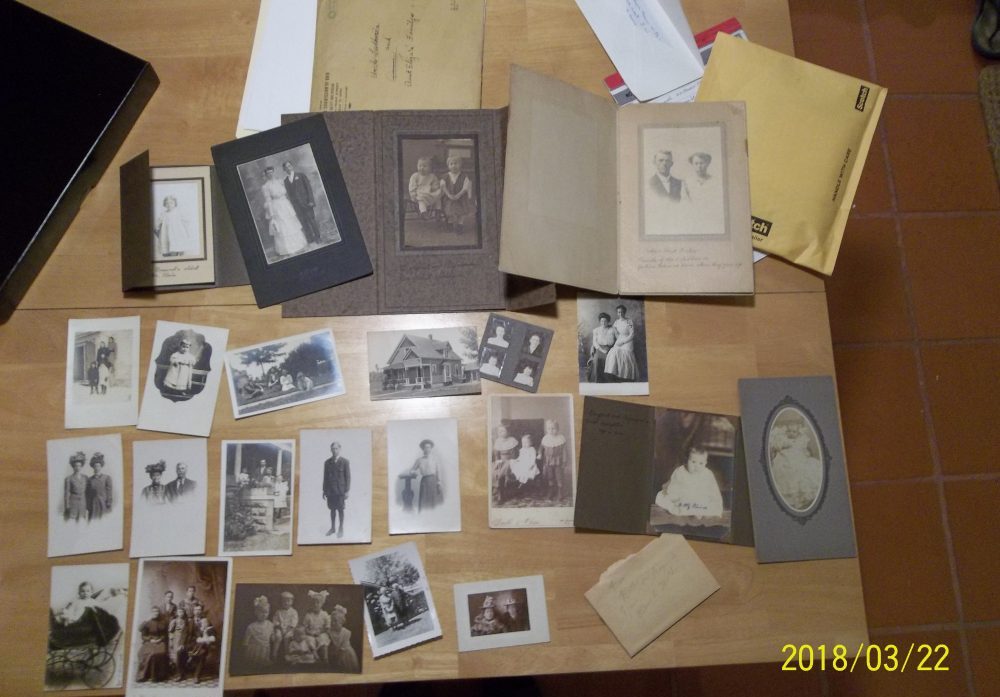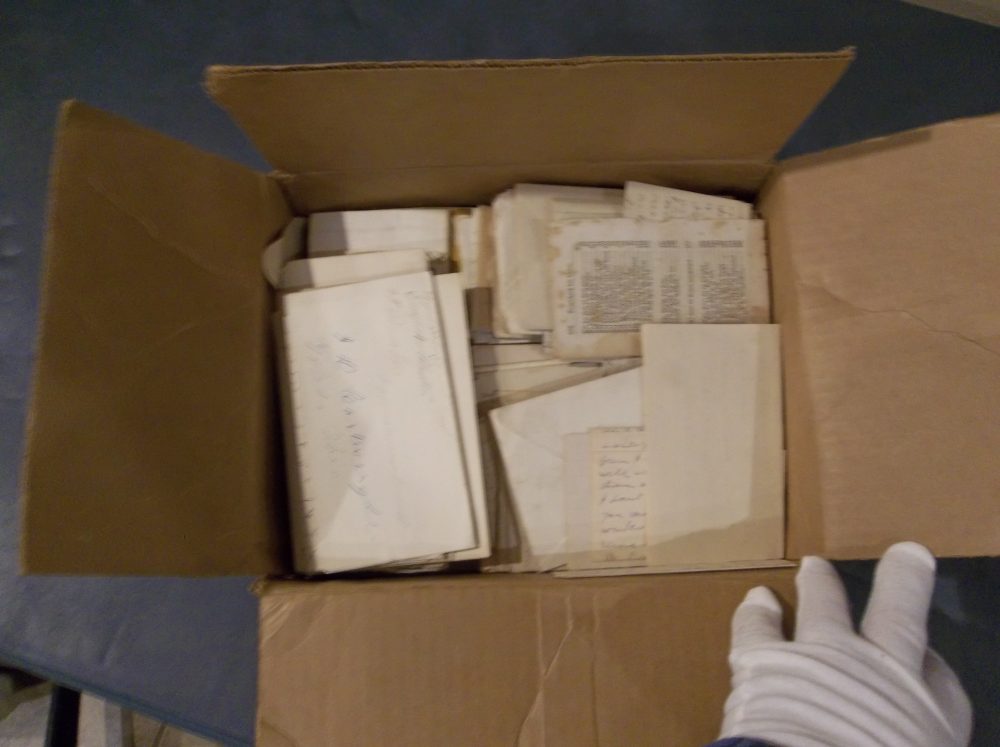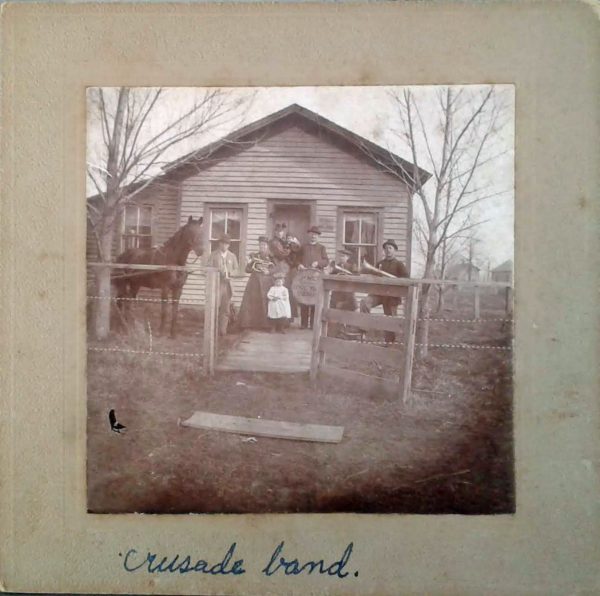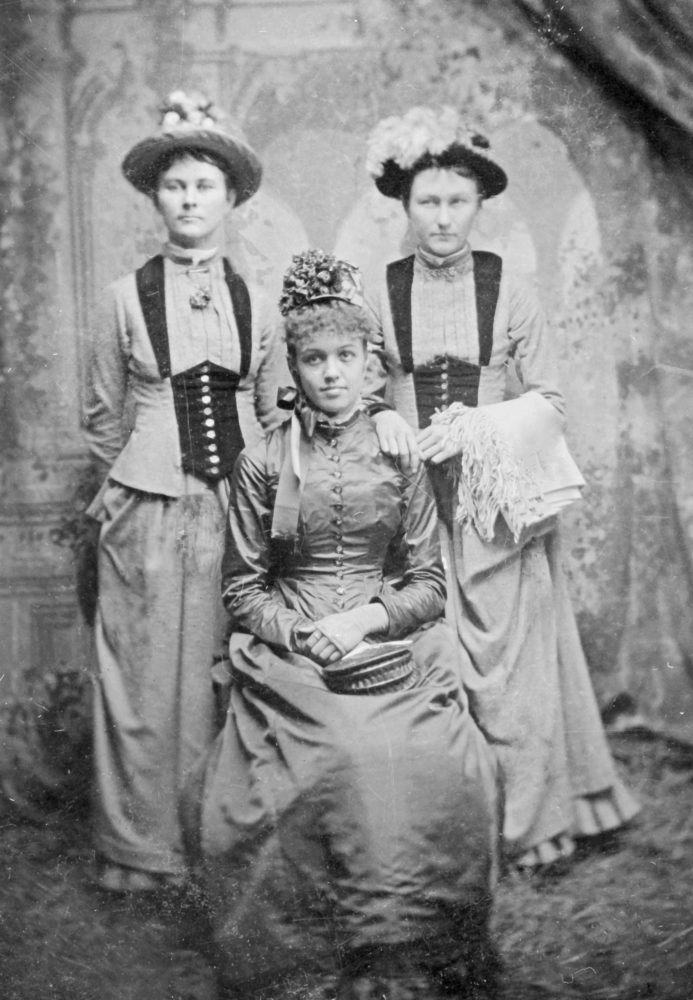September 2021
For some time, I have been considering the future for the letters, pictures and documents I’ve accumulated over the last fifty years. Three years ago I asked several archives and a couple have indicated interest and said they would take my collection. I had just begun to put it in shape to donate when a cousin contacted me to see if I would be interested in pictures from the 1890 to 1920 of the families of my great grandfather’s siblings. A fat envelope arrived in a few days with dozens of photographs, a few of which are shown here as well as a few letters.
Three months later Marilyn and I made our annual trip to Kansas for an archaeology dig and then drove up to Michigan to visit family. On our way home to Arizona, we visited cousins near Toledo including the cousin who sent me the photographs. She came with boxes of letters and photographs. The letters she gave to me and we went through the photographs to try to put names with them. When I opened the box of letters I found there were almost 200 of them, mostly written by or between my great grandfather Luther Finch, his mother and his siblings. Most were written between 1880 and 1920 but some were as early as the 1860s and late as 1940s.

There were letters from their college days and letters describing how the sisters helped out when Luther’s wife died after the birth of my grandfather. There were newsy letters about egg prices, catty letters about siblings’ spouses, about money loaned to relatives that wasn’t getting paid back, about the births of nieces and nephews. These items relate to my paternal Finch side.
My mother’s side, the Rebmans have also gifted me with dusty boxes to steward. Her grandparents were immigrants from the Black Forest and Czech areas of Austria whose parents settled in the Kalamazoo, Adrian, Manistee, Michigan areas. After they married her paternal grandparents bought land along the Ann Arbor Railroad tracks outside the village of Copemish in Manistee County where my mother grew up. While not as voluminous as on the Finch side the materials, for example, do point up the importance of the AA to the rural communities along its tracks. It was possible to get a post card sent and received the same day between Copemish and Ann Arbor via the Railroad Post Office.
Meanwhile I’ve gotten sidetracked with the possibility of some further research triggered by some of the items. On and off, I’m working away at scanning the material so I can eventually send off the originals to a safe haven and have the copies to play with.

Taphath Finch joined a group patterned on the Salvation Army organization called The Christian Crusaders in the early 1890s and traveled around Michigan with a band playing for revivals. There are several letters addressed to Lieutenant Taphath Finch in the collection about the Michigan Division of the Christian Crusaders activities. Taphath is probably the woman with the horn next to the man holding the horse.

I think this is the most interesting of the many photographs I received. The original is a small dark tintype, about 3 x 4 inches and I worked it in Adobe Photoshop Elements to lighten it and improve the contrast. The two standing women are Eliza Finch on the left and her sister Minerva on the right. I don’t know who the seated woman is. I think from the clothing that this is from early 1890s and it is someplace that the two sisters would have worn identical traveling outfits to. Also small tintypes were popular souvenirs at this date of fairs and expositions. I hazard a guess that this might have been the Chicago Columbian Exposition or world fair of 1893. Clothing styles would fit and the sisters lived in towns along Lake Michigan with ships and excursions easily possible. Eliza was born about 1866 and Minerva in 1854.
